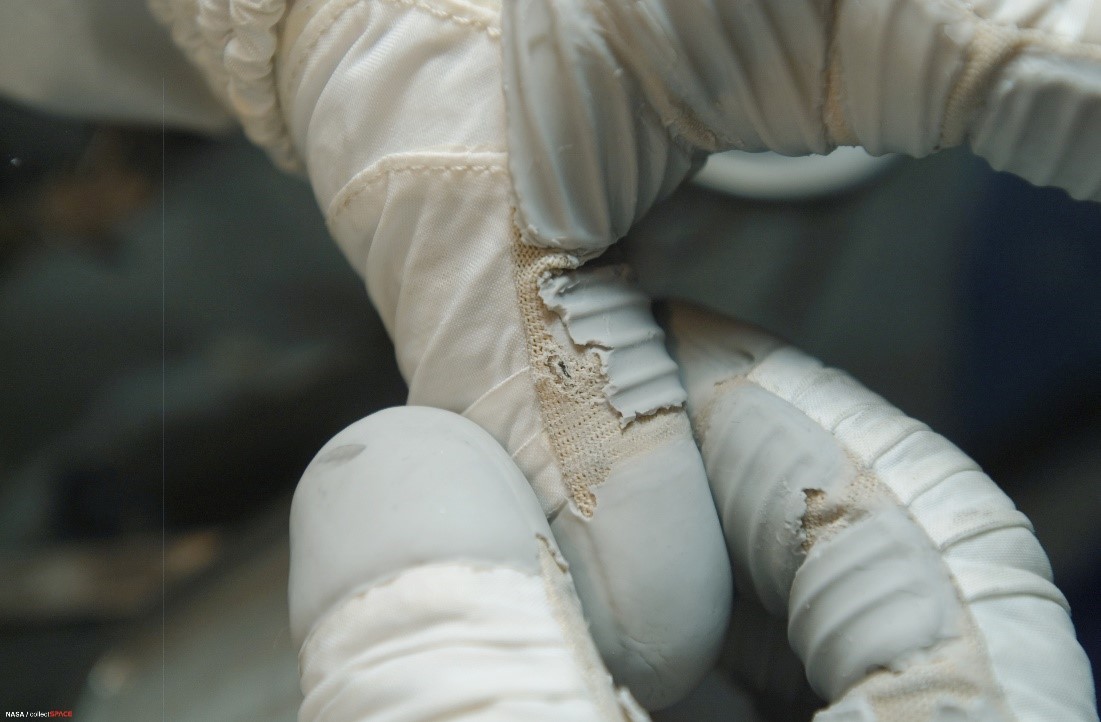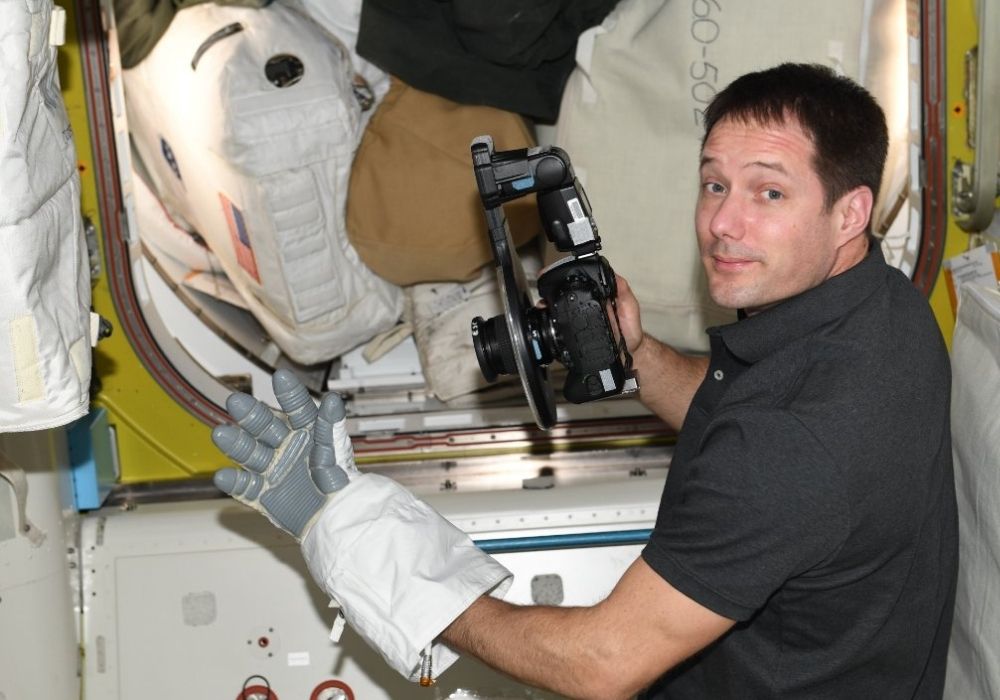When spacewalkers move around the outside of the International Space Station, most of the time they do so by moving hand-over-hand using carefully placed handrails. The same hands they use for locomotion also are key tools for building and maintaining the space station – and a first line of defense against the vacuum of space.
But not everything on the space station’s exterior is completely smooth, so there are potential hazards to the gloves that are part of the spacesuits, or Extravehicular Mobility Units, the astronauts wear. And the conditions are continuously changing as tiny orbital debris particles raise more imperfections as they strike.
Because of this, astronauts perform regular glove inspections throughout each spacewalk to evaluate the condition of the gloves. Each spacewalker uses gloves personally fitted for their hands.
“It just kind of looks like a scratch or a couple of missing threads maybe,” astronaut Rick Mastracchio reported during a routine inspection during his spacewalk in August 2007 during STS-118. While that glove evaluation resulted in an early end to the spacewalk, the spacewalkers returned safely to the Quest airlock and entered the station without issue .
Since June 2007, all spacewalkers have performed routine glove inspections several times during each spacewalk. These augment careful inspections of each glove made inside the station before and after each spacewalk. Now, a new technology is being investigated to evaluate wear and tear on spacesuit gloves using machine learning.
The process of photographing, inspecting, and analyzing spacesuit gloves relies on human team members to determine whether the gloves can continue to be used in the harsh environment of space. With the advent of machine learning algorithms used for everything from radiology for cancer diagnosis to inspection of critical infrastructure such as roads and bridges, the technology can be applied to the time-intensive task of spacesuit glove inspections.
Experts in the Extravehicular and Human Surface Mobility Program at NASA’s Johnson Space Center in Houston are evaluating whether such automated inspections can augment the human inspections of spacesuit gloves.
The team has focused its efforts on utilizing existing data for model building, and then testing this capability on the station. While this project is considered strictly research and development and is not part of the safety critical process, this multiple-phase approach opens the possibility of someday integrating the effort into real-time operations.
NASA is collaborating with Microsoft Azure, Hewlett Packard Enterprise Space Borne Computer-2 to use the purpose-built artificial intelligence and machine learning resource on the station. This collaborative effort seeks to prove in-situ capabilities and perform these evaluations by developing machine learning object detection and classification models that will examine photos and determine the potential damage. The output probabilities are interpreted by a human to determine if the gloves could be used again.
An initial test of this resource was conducted with the space-borne computer on the station in December. This test showed the computer can execute the models and complete a glove photo analysis. In this test setup, the ground team fed the glove images, previously taken in space by astronauts, to the computer from Houston. Glove inspection experts are working to improve the accuracy of computer-aided inspections to a level that will pass safety standards.
In March 2022, the team demonstrated the capability of the space-borne computer testing post-spacewalk glove photos without the ground team performing photo uplink. This demonstration is the beginning of evaluating the autonomy needed for missions to the Moon through NASA’s Artemis program.
































